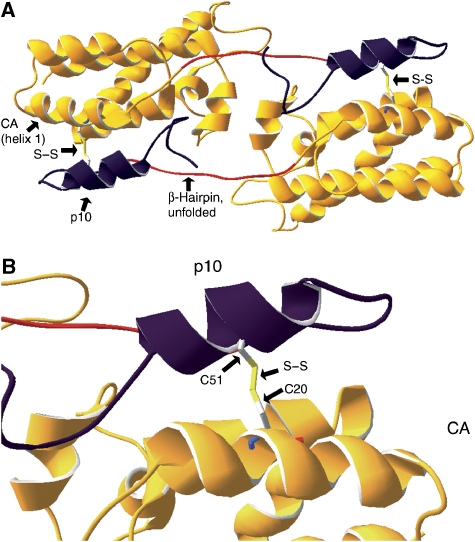Figure 2.
(A) High-resolution structure of the extended NTD dimer (1P7N) showing disulphide bonds predicted to form when p10 E51 and CA T20 are mutated to cysteines. The disulphide bonds (yellow) link CA (orange) and p10 (purple) domains across the dimer interface. Those residues that form the β-hairpin in mature CA are shown in red. (B) Close-up of panel A showing the predicted E51C-T20C disulphide bond.

